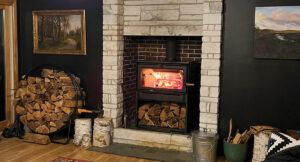Dear Pat: Our kitchen and dining rooms are in major need of some natural light. We’ve been thinking about installing a skylight, but we’re wondering if that will increase our energy bills. Can you provide any advice? – Monica
Dear Monica: Skylights can bring a little of the outside world indoors and make your living space more livable—when they are installed correctly. But they can also impact your energy bills and comfort level, so you’re taking the right steps by doing some research ahead of time.

One downside of skylights is they can add heat to your home during the summer and heat loss during the winter. The amount of impact depends upon a number of elements, including the skylight’s energy rating, size, placement and quality of installation. You can check its energy efficiency by looking at the skylight’s NFRC Energy Performance Label, which shows four important pieces of the energy efficiency puzzle:
- Insulation value (U-Factor)
- Ability to transmit solar heat (Solar Heat Gain Coefficient)
- Ability to allow light to transfer (Visible Transmittance)
- Air leakage.
Finding a unit with the best ratings in all these categories will help maximize your skylight’s energy efficiency and performance. It’s probably worth spending a little more on a better product, since professional installation takes up the lion’s share of the cost of installing a skylight into an existing roof. That said, even the best skylight has a much lower insulation value than a properly insulated attic.
Just as important as finding the right skylight is determining the proper size, number and placement. You want adequate light, but too much can make a room less functional on a bright day. Skylights on a steep, north-facing roof will reduce the unwanted solar heat gain in the summer, but this also reduces the desirable solar heat gain in winter.
Ultraviolet (UV) light can cause furniture finishes to fade. This can be minimized by making sure your skylight has high-quality glazing or by applying a special film to the skylight.
Proper installation by a knowledgeable professional is essential to avoid all-too-common problems. One serious issue is water leaks—a problem often caused by improper exterior installation on the roof. Flashing must be installed correctly to be effective for the pitch of the roof and the type of roofing materials.
Another potential problem area is the skylight shaft that transmits the light into the living space below. Inadequate or poorly installed insulation is a source of heat loss and can cause ice dams that allow water to find its way into the home. Air leaks in the shaft can also cause these types of problems. Moisture problems can cause condensation build-up inside the home, resulting in mold, mildew and rot (especially in bathrooms).
An alternative option to the regular skylight is the tubular skylight. A small skylight on the roof is connected to a flexible tube that runs through the attic to a room below. This system provides a diffused natural light. The tube is much smaller than a skylight shaft and is easier and less expensive to install. The tube has less heat loss and is less leak-prone. Tubular skylights can fit into spaces that a traditional skylight can’t and can be a better choice in rooms with high moisture, like bathrooms, saunas or indoor swimming pools.
As you consider your options, it may be worthwhile to think back to your goals. Perhaps you can gain more light in these rooms without installing a skylight by trying these steps:
- Paint the room a lighter color.
- Hang mirrors.
- Replace heavy window coverings with lighter ones.
- Add indirect lighting such as upward-facing pole lamps.
- Trim any trees that shade the windows.
If you’ve done your research and decide to move forward with new skylights, I hope you will consider buying the best product your budget will accommodate––and find a contractor with experience and solid references to provide the installation. Good luck!
This column was co-written by Pat Keegan and Brad Thiessen of Collaborative Efficiency. For more information on skylights, please visit: www.collaborativeefficiency.com/energytips.







